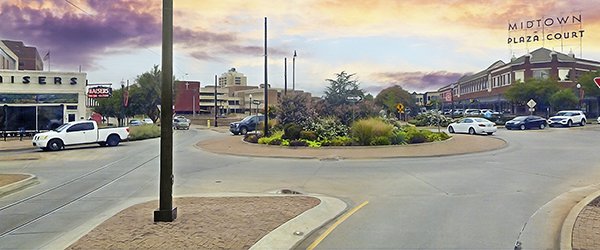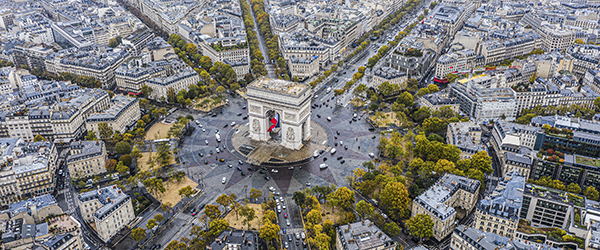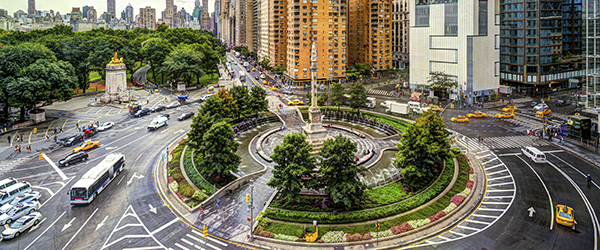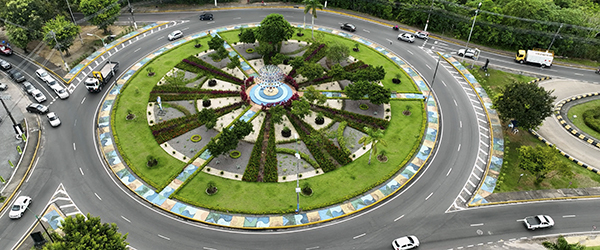Improving Road Safety with Roundabouts
Contrary to intuition, roundabouts are a remarkably safe intersection design that effectively safeguards drivers and pedestrians. Not surprisingly, the Federal Highway Administration (FHWA), the Insurance Institute for Highway Safety (IIHS), and the Oklahoma Department of Transportation (ODOT) all advocate for the increased use of roundabouts in roadway design.
Studies
have consistently shown a significant reduction in the number and severity of
accidents at roundabouts compared to traditional stop-controlled or signalized
intersections, including the National Cooperative Highway Research Program
(NCHRP) Report 572: "Roundabouts in the United States".
FHWA's
Proven Safety Countermeasures initiative (PSCi) includes roundabouts in its
recommendations. Per the FHWA website, "These strategies are designed for
all road users and all kinds of roads—from rural to urban, from high-volume
freeways to less traveled two-lane State and county roads, from signalized
crossings to horizontal curves, and everything in between."
"...injury
and fatal crashes can be reduced 20 percent for traffic flows of double-lane
roundabouts with approximately 40,000 average daily traffic (ADT), and by as
much as 70 percent for traffic flows of single-lane roundabouts up to 20,000
ADT." - Reducing Points of Conflict, FHWA.

Key design safety elements of a well-designed roundabout
Unlike stop-controlled intersections, roundabouts promote a continuous traffic flow, reducing the need for complete stops. The geometry of the roundabout forces drivers to reduce speed while yielding to oncoming traffic and to continue at similar, slower speeds within the roundabout. Entry widths give roadway designers control over traffic volumes within the roundabout.
The
design of roundabout entries minimizes the number of "conflict
points" where vehicles, cyclists, or pedestrians intersect. Fewer conflict
points constitute a significant advantage of roundabouts. Per the FHWA, "a
single-lane roundabout has 50% fewer pedestrian-vehicle conflict points than a
comparable stop or signal-controlled intersection. Conflicts between bicycles
and vehicles are reduced as well."
Transportation
engineers can further protect pedestrians by leveraging the splitter island
between entry and exit lanes to reduce distances across roadways pedestrians
travel. These reduced distances, slower traffic speeds, and vehicles traveling
in only one direction make crossings simpler and safer for pedestrians and
drivers.
The Beauty of Roundabout Design
Beyond safety, roundabouts offer additional benefits. Their central islands provide an opportunity for aesthetic enhancements, allowing communities to express their character through sculpted landscapes or eye-catching signage. The most famous is the Arc de Triomphe Roundabout in Paris, France, but other notable roundabouts attracting tourists include Columbus Circle in New York City, NY; the Putrajaya Roundabout in Putrajaya, Malaysia; and the Selamat Datang Monument in Jakarta, Indonesia.




Lower Lifecycle Costs of Roundabouts
While the initial construction costs of roundabouts can be comparable to those of traditional intersections or slightly higher (due to enhancements to the center island), roundabouts often demonstrate cost-effectiveness over time when considering the entire life cycle, including construction, maintenance, and operational costs as there are no traffic signals requiring electricity, maintenance, and repair due to vehicle collisions.
It's
important to note that the cost-effectiveness of roundabouts goes beyond
monetary considerations. Factors such as improved safety, reduced congestion,
and potential environmental benefits can contribute to the overall value of
roundabouts.
The case for roundabouts extends beyond monetary considerations. The many advantages include safety, reduced congestion, environmental benefits, and even opportunities for community expression, position roundabouts as a roadway design solution improving road safety and enhancing the overall transportation experience. As communities prioritize safety and efficiency, the roundabout emerges as a compelling and sustainable intersection design.
How to Drive Through a Roundabout
- How to drive through a roundabout (pdf) Wisconsin Department of Transportation
- How to drive a roundabout (YouTube video) Wisconsin Department of Transportation
About the Author
George Mallet’s more than eight years as a civil engineer focused on roadway design in the private and public sectors brings a considerable understanding of the big picture for his work in roadway design for Guernsey. He started his career with the Oklahoma Department of Transportation (ODOT), working in various capacities such as construction inspector, roadway design engineer, bridge and local government engineer, and resident engineer. George is always aware of the bottom line, bringing projects in on time and within budget. This experience, from project scoping to construction auditing, adds a constructability background to Guernsey’s already dynamic transportation engineering team.



